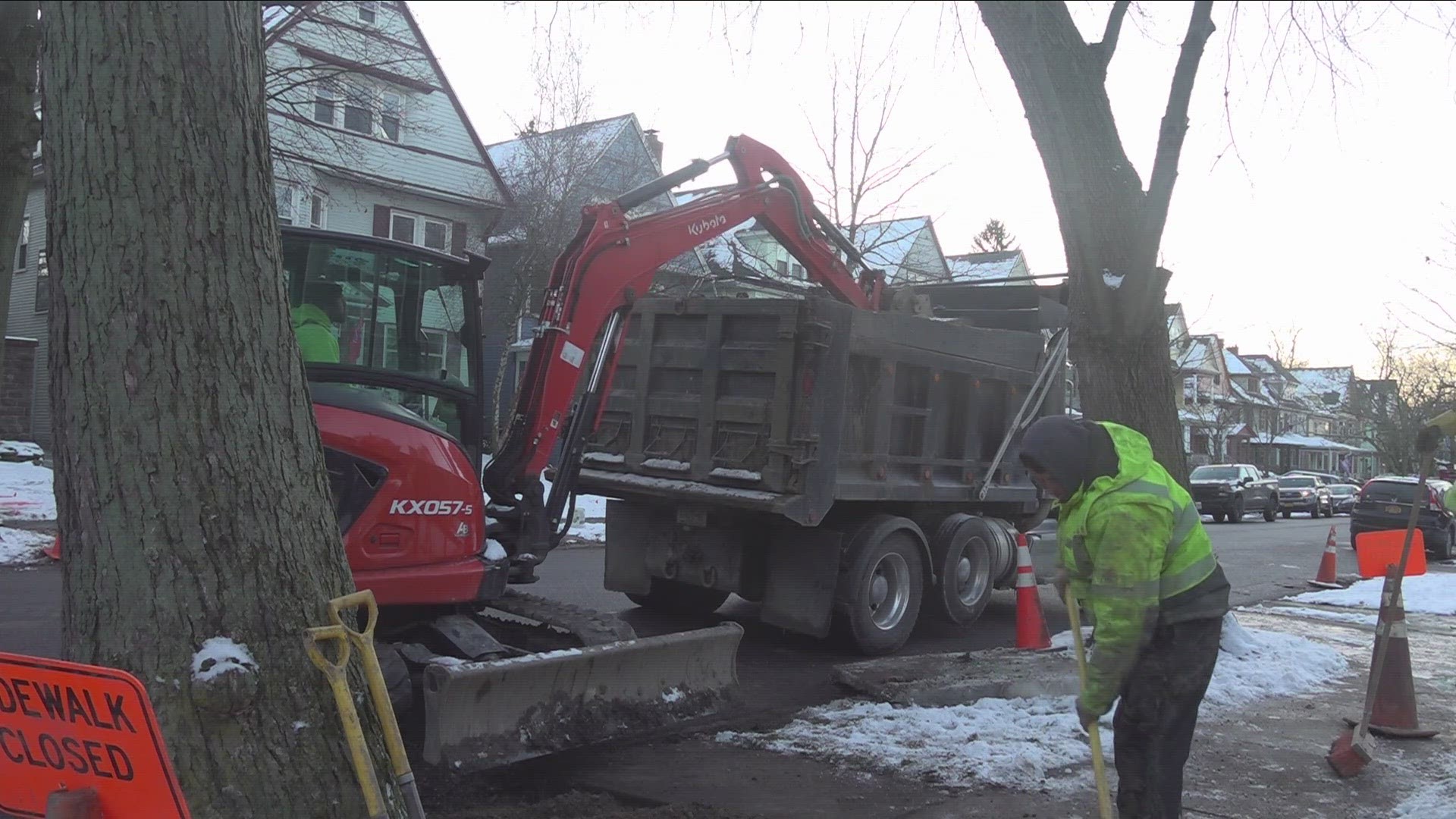BUFFALO, N.Y. — The City of Buffalo is taking steps to address a lead pipes issue that has spanned nearly a century.
As of Nov. 30, the city had replaced 2,000 lead service lines but said that is just the start. There are currently over 30,000 unknown service lines across the city.
To address the issue, the city announced Tuesday that it is launching a new online map, which shows all the service lines in Buffalo. The map lists where the current lead service lines are, which ones have been replaced by copper pipes, and which ones still have unknown materials.
City officials said today that they need the help of Buffalo residents to address this issue. They are asking residents to log onto the map and search by their address to view the service lines in the direct vicinity of where they live. For those that live near unknown lines, the city is asking they fill out a survey, which will guide them through how to identify whether the pipes are lead or not and submit that information.
“With so many dangers and obstacles that we're all facing, certainly water shouldn't be one of those dangers,” said Franchelle Parker, executive director of Open Buffalo.“From the East Side to the West Side and all across Buffalo, we have a role to play in this.”
The EPA announced last month that it is proposing a rule to require water systems across the nation to replace their lead service lines over the next decade with the hopes of decreasing lead contamination in water. Buffalo is one of the first cities in the nation to introduce an initiative of this kind and said it was already working on the system before the EPA announcement. The Buffalo Common Council has also committed $10 million in American Rescue Plan Funds to speed up the process of eliminating these lead pipes.
Buffalo resident Dan Cadzow learned firsthand how serious this problem can be when his child was diagnosed with elevated blood lead levels as a toddler.
“We were sad and confused,” he said. “We thought we had that sort of thing under control in our life...We'll never know for sure, but the evidence and the testing I've done since point toward the water.”
His child’s condition caused him to conduct extensive research of his own and publish a report, now leading him to wonder if the city’s new method could be causing a bigger problem.
“I'm not convinced that that's the source of our waterborne lead exposure problems,” he said. “I think it's more likely that it's the pipe scale that has lead trapped in it. And whenever they replace a lead service line, they're creating a plume of lead-tainted water that could affect people miles downstream.”
Learn more about the initiative here.

